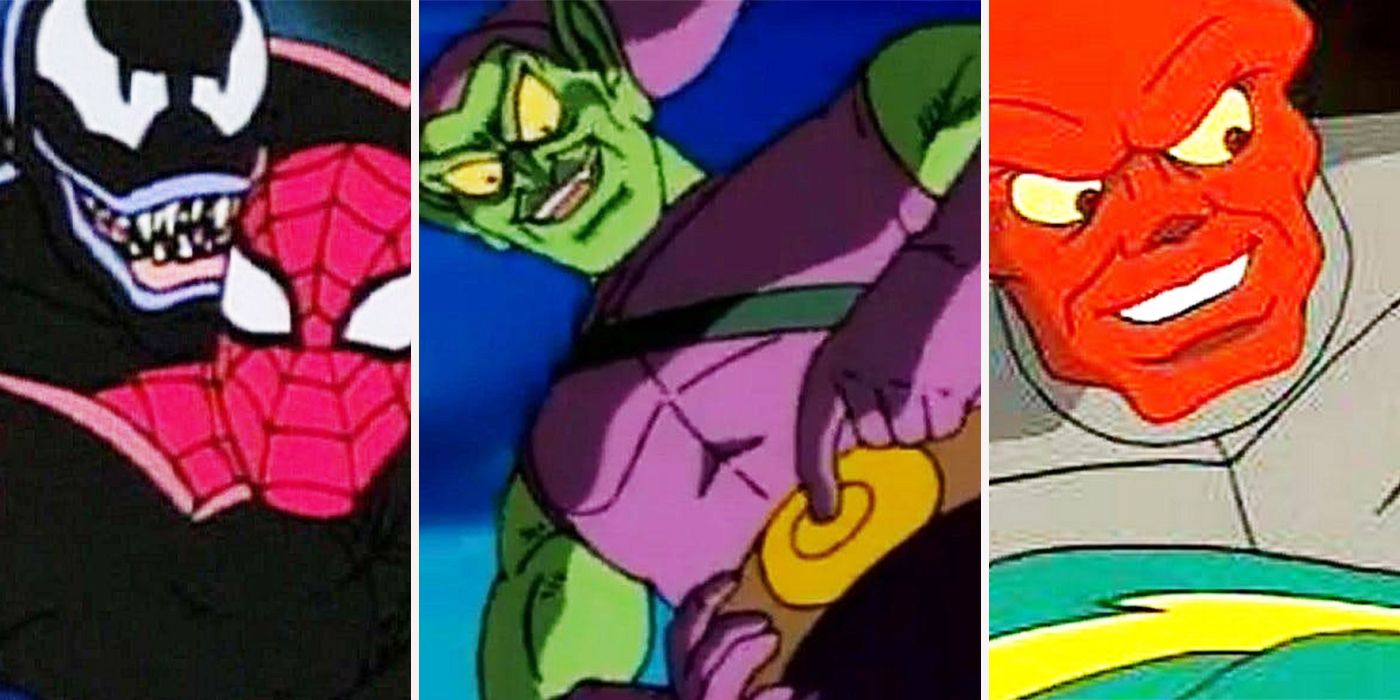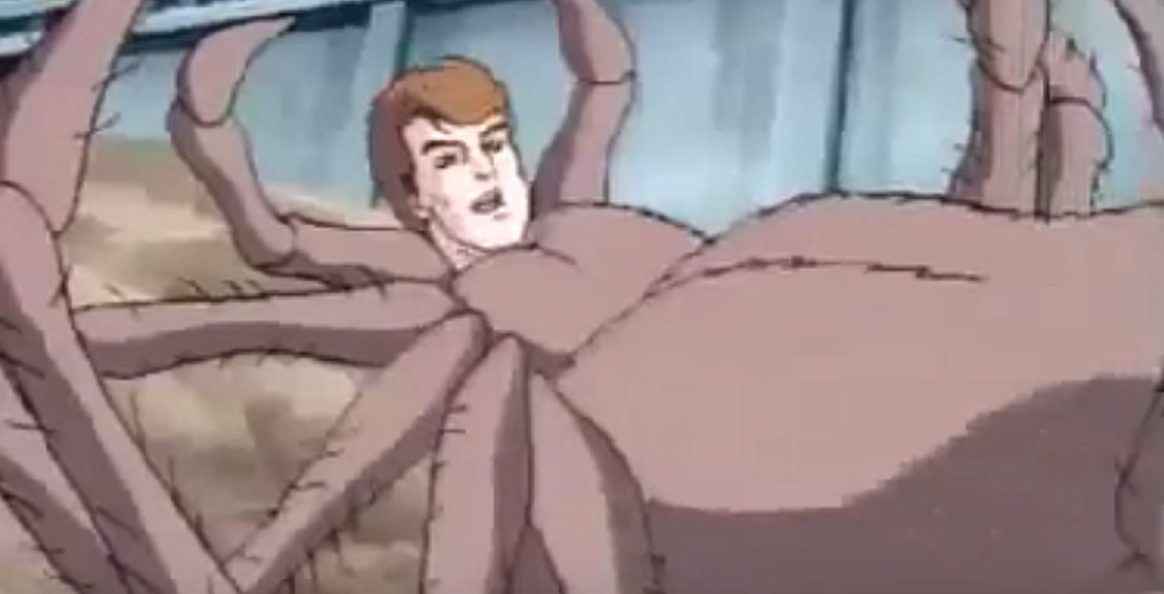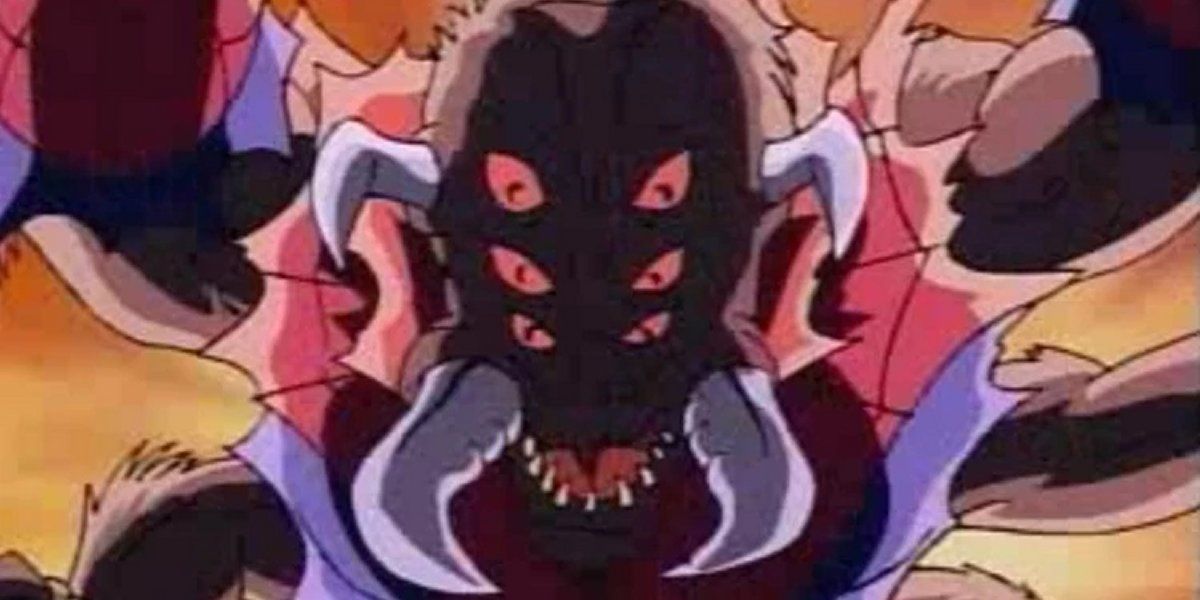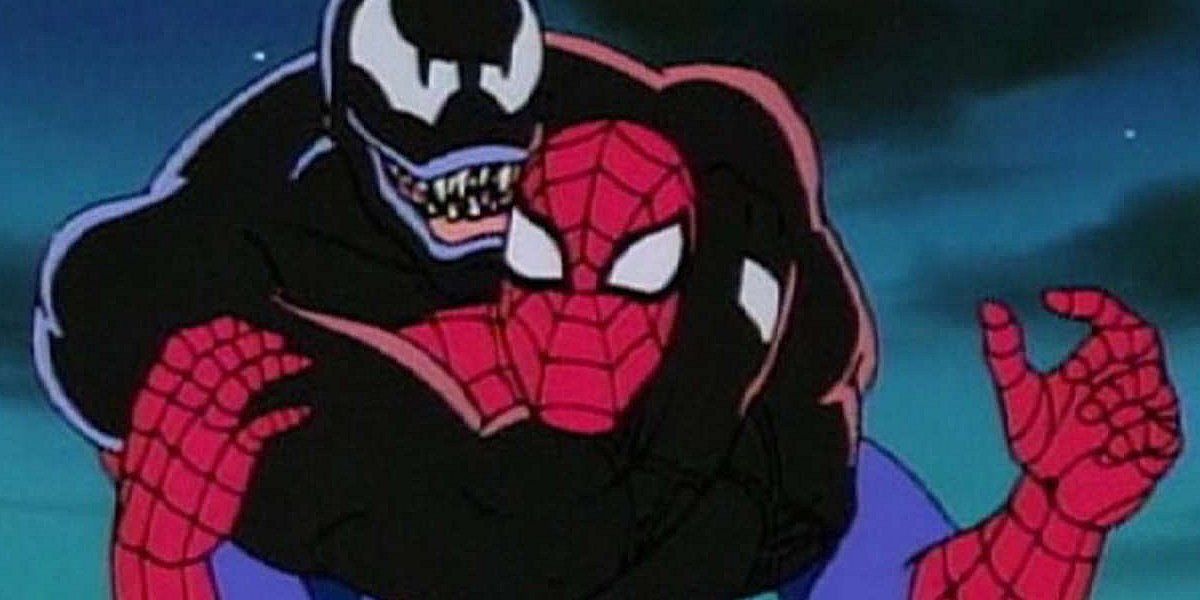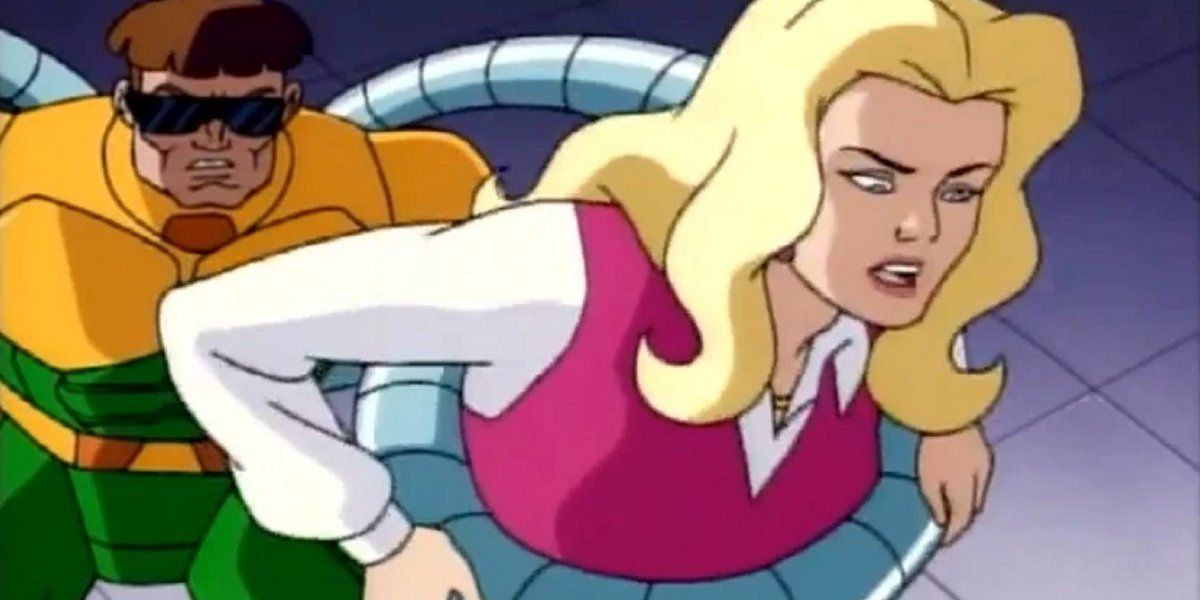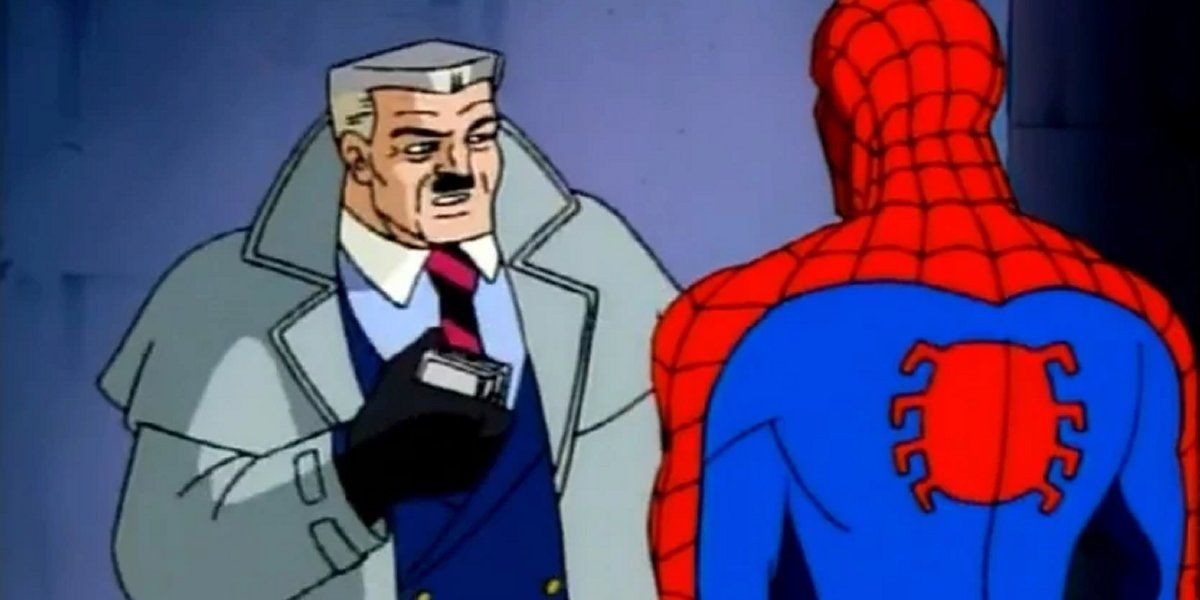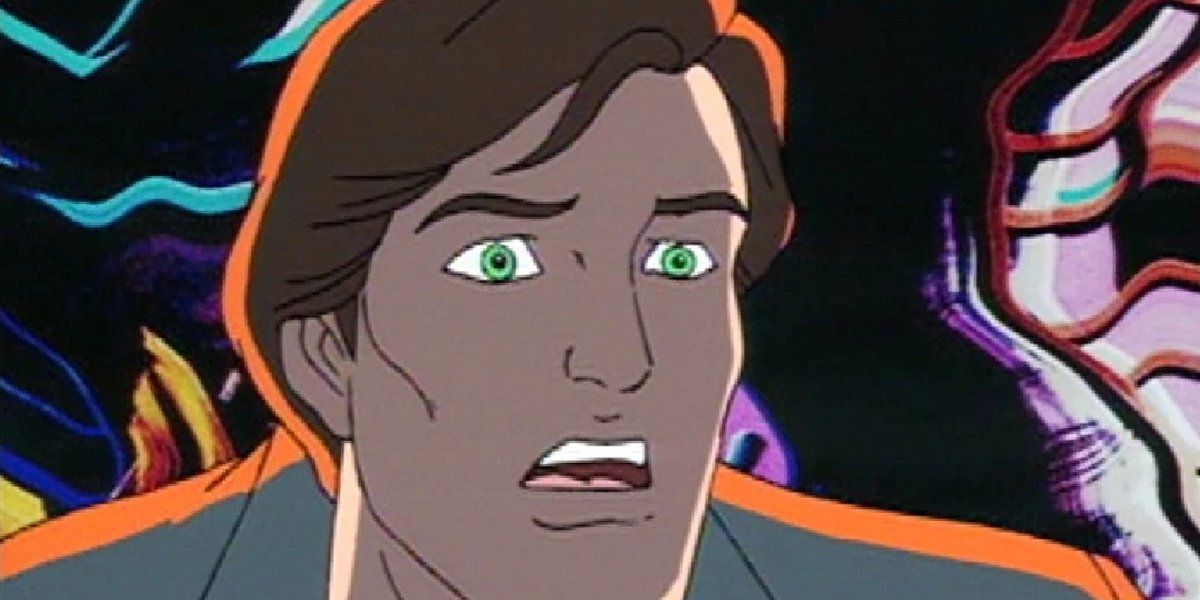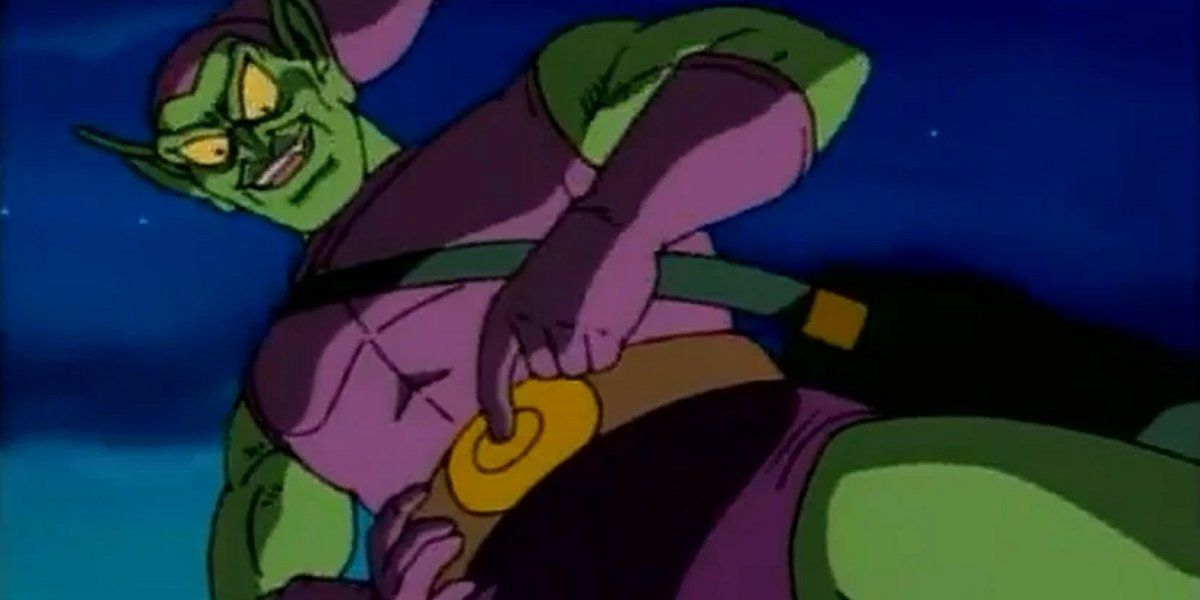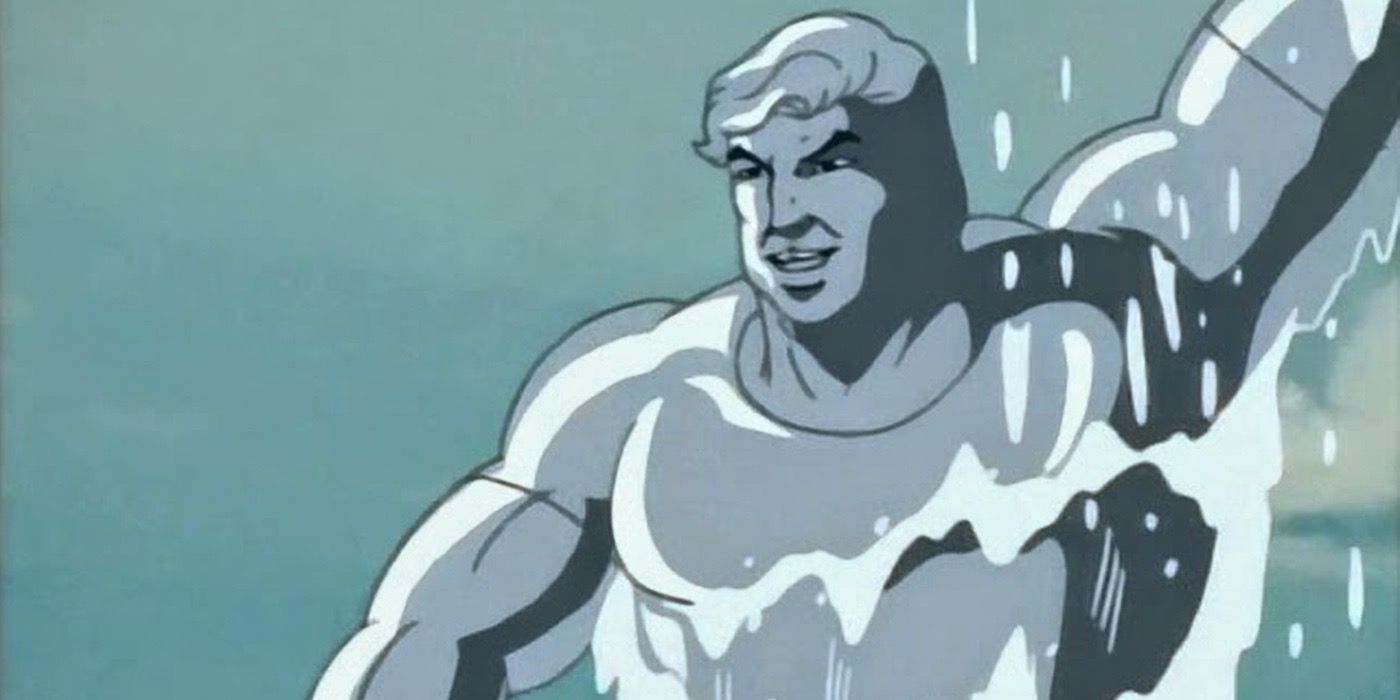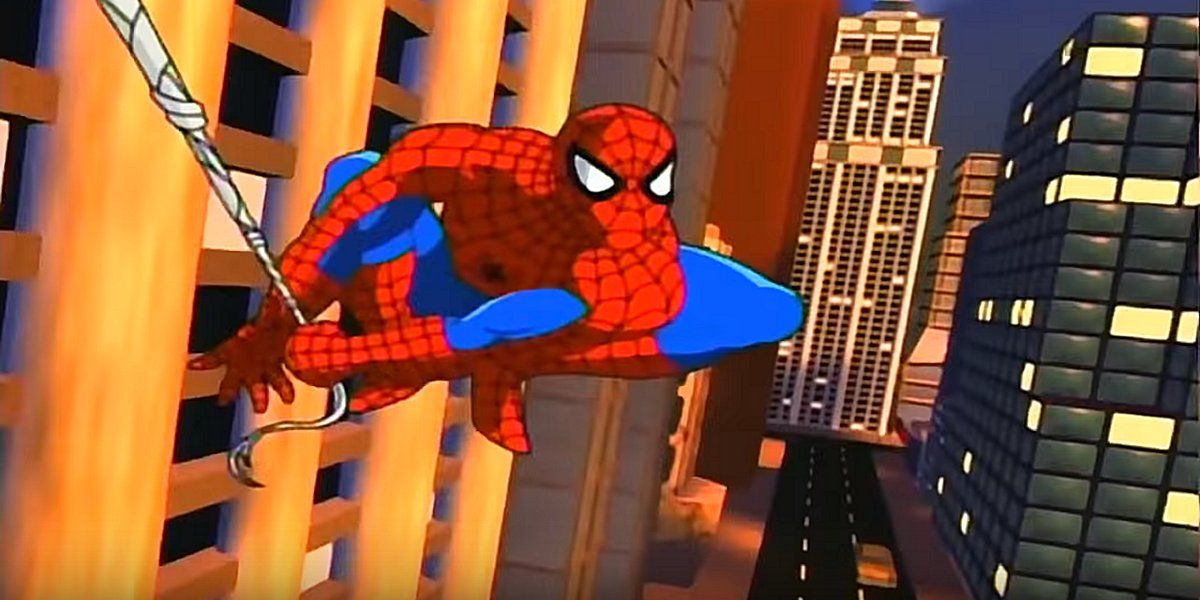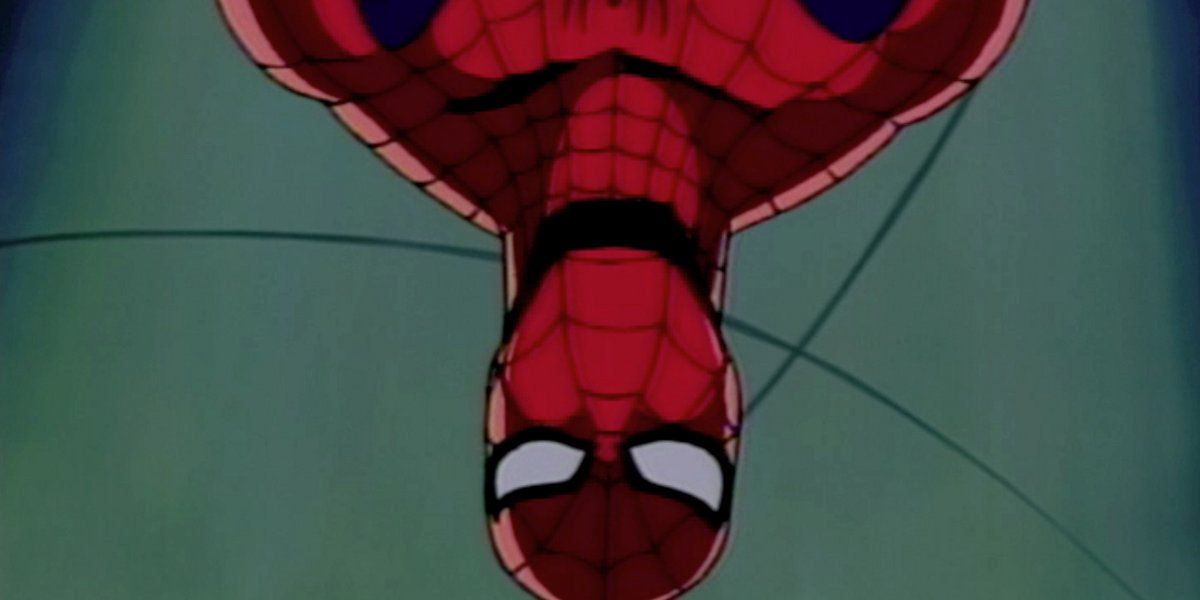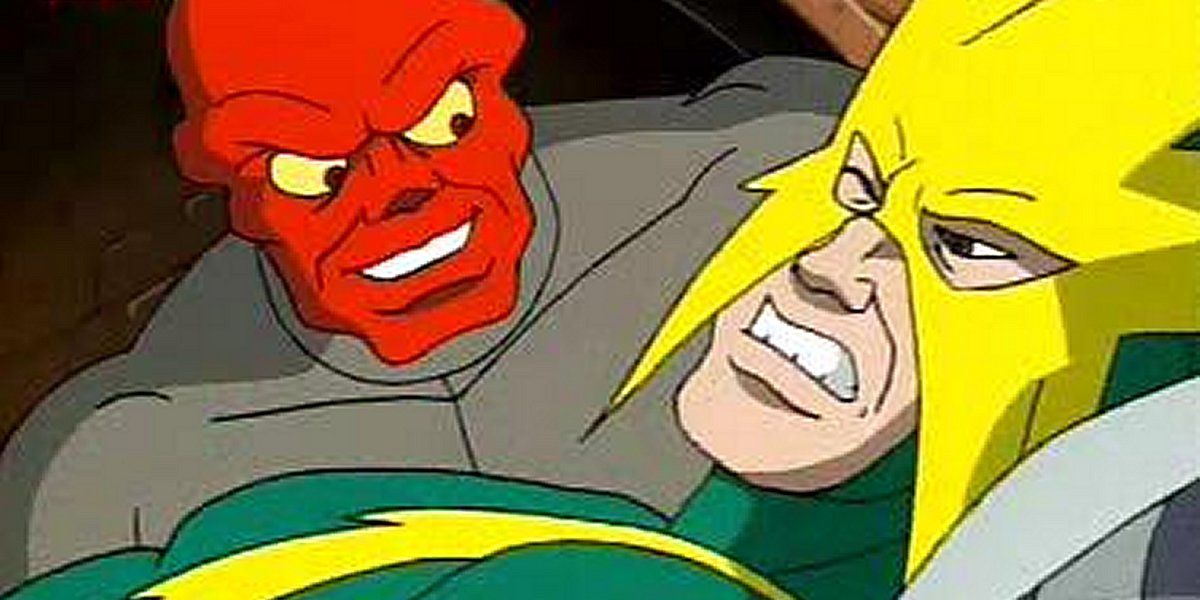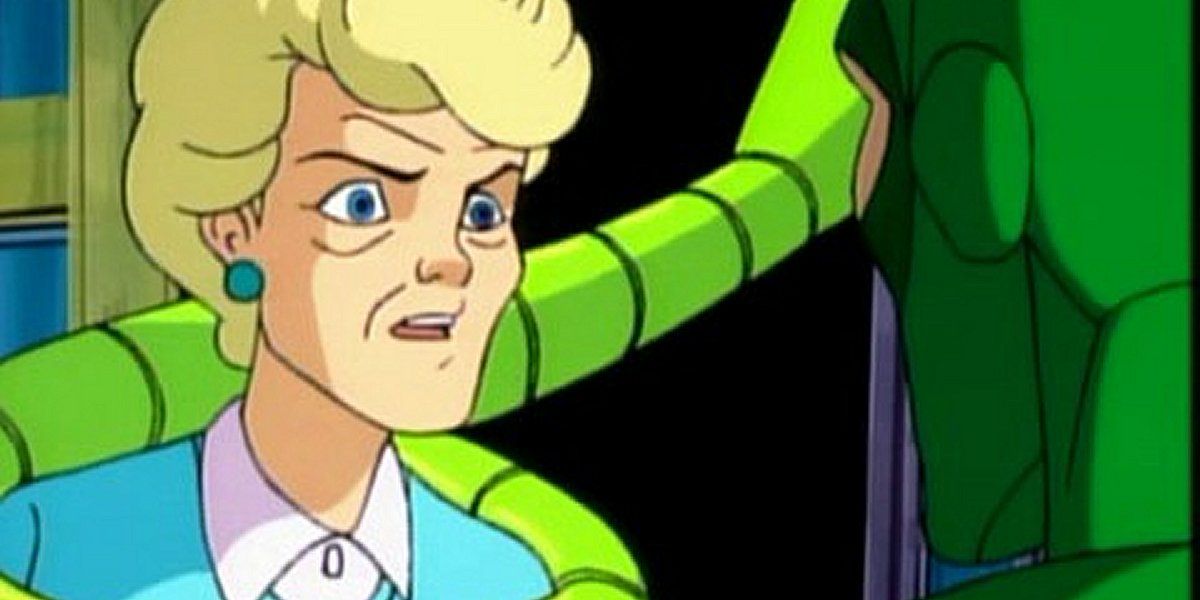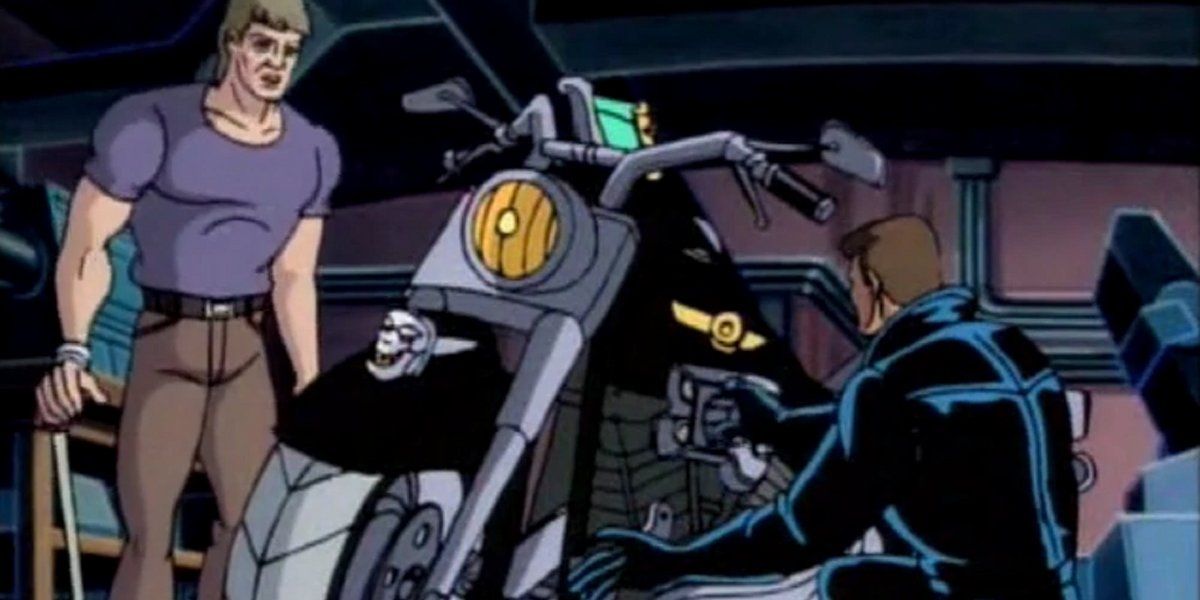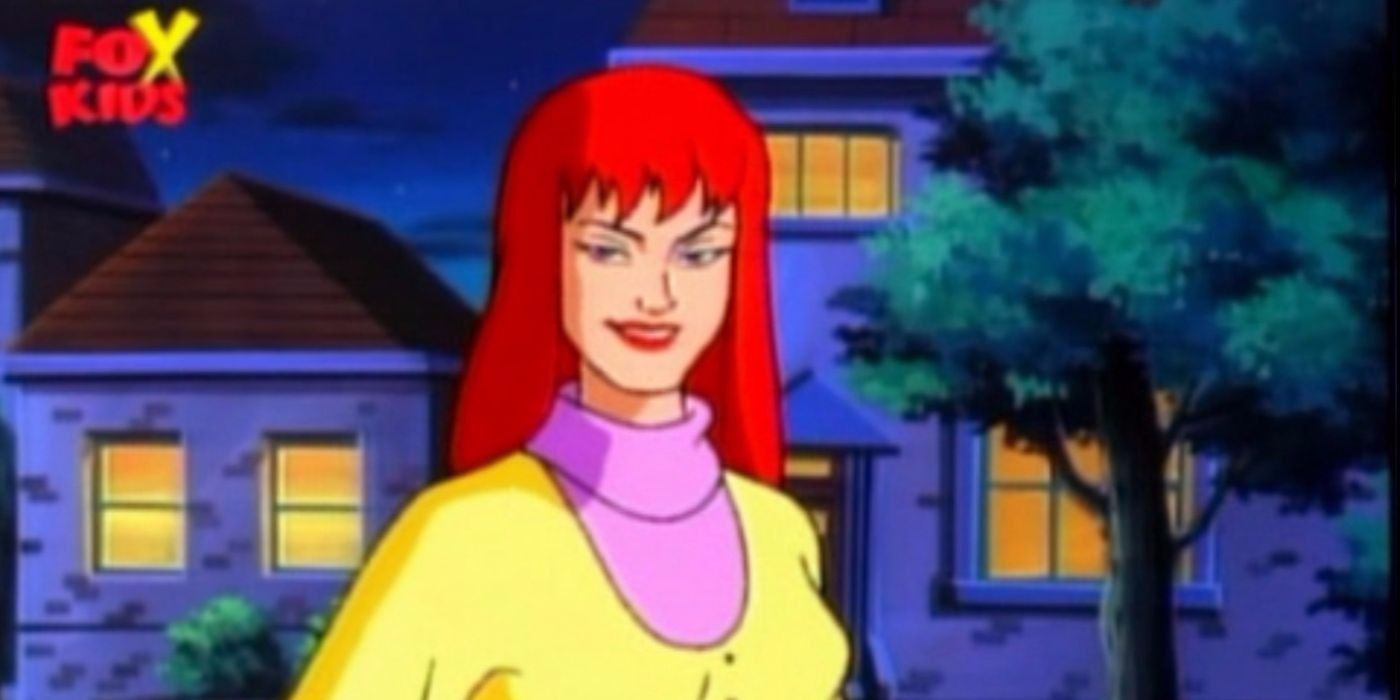If you grew up in the '90s, then the chances are that Spider-Man: The Animated Series was the version of the webslinger that you feel the most nostalgic about. This cartoon came out years before Sam Raimi's Spider-Man movies spun their way to box office millions, and it could be argued that it even paved the way for the success of the movies, introducing countless kids to the lovable radioactive superhero.
What made Spider-Man: The Animated Series stand out was that, at the time, it was the most faithful adaptation of the original comics that had ever been produced. While it made many notable storyline departures, it was the first cartoon to capture the key struggle between Peter Parker's two lives. The show's success was largely thanks to the guidance of writer and producer John Semper, who has since gone on to write Cyborg for DC Comics.
The series proved to be hugely influential in many ways, particularly in how it told the single most iconic version of the Venom story to date.
However, it's now been almost twenty years since it left the air, and there are a lot of subtle plot points, Easter eggs, hidden references, and weird production mandates that have slipped through the cracks of time.
Let's look back on the Spidey cartoon that an entire generation grew up on, and see if we can locate the 15 Things You Completely Missed in Spider-Man: The Animated Series.
Peter's Horrific Origin
Here's a subtle point you never noticed: when Peter got bit by a radioactive spider, it didn't turn him into Spider-Man. It turned him into Man-Spider.
This is actually a rather significant and interesting change to Spidey's origin. Remember the storyline where he gets six arms? Well, in the comics, this happened after Peter experimented on himself to get rid of his powers. In the cartoon, however, Spidey sprouts his extra arms as a natural evolution of his changed genetic state — and his genes continue to mutate, eventually transforming him into a monstrous creature called the "Man-Spider."
Essentially, getting bit by a "neogenic" spider kick started a process that eventually transformed Peter into Man-Spider. This is foreshadowed when the series flashes back to Spidey's origin, and a newly-bitten Peter has nightmares of transforming into a giant spider with a human head.
In other words, the whole "Spider-Man" thing — being a human being with spider-powers — was just one stage on the ladder, as Peter's final form was actually supposed to be Man-Spider.
Man-Spider was Voiced by Winnie the Pooh
While we're talking about Man-Spider, let's not neglect the fact that this monstrous creature wasn't voiced by Christopher Daniel Barnes, the guy who played Spidey. Instead, the creature was played by Jim Cummings, a veteran voice actor most well known for being the voice of that cuddly stuffed animal Winnie the Pooh. Quite a change, no?
Jim Cummings has done voices all over the place, having also been the voice of Darkwing Duck, Razoul, and many others. However, his most famous role is Winnie the Pooh, a character he has played since 1988, and who he will be voicing again in the upcoming live action Christopher Robin movie.
In Spider-Man: The Animated Series, Jim Cummings also supplied the voice of the Shocker, and he came back in Spectacular Spider-Man to play Crusher Hogan.
Spider-Man Never Actually Punches Anyone
Batman: The Animated Series set off the wave of comic book inspired cartoons in the 1990s, and Batman also got away with a lot of stuff that was forbidden to later cartoons. By the time Spider-Man came around, the standard Broadcast Standards and Practices (BS&P) were much stricter, with one particularly strange rule being that superheroes weren't allowed to punch anyone.
It sounds crazy, but it's true. In the entire series, Spider-Man uses his webs, dodges, tackles people, and does all kinds of things, but he never punches anyone, ever. Luckily, Spider-Man's unique powers and web-shooters gave John Semper and crew the opportunity work around the "no-punching" restriction in a clever manner.
Interestingly enough, it has since been pointed out by Tom Holland — the MCU's Spidey — that when he was playing Spidey in Spider-Man: Homecoming, he also never punched anyone, as the live-action fight scenes were designed based on the idea that, as a kid, Peter would try to avoid punching people.
Felicia Hardy Took Gwen Stacy's Place
Spider-Man: The Animated Series gave Felicia Hardy a far more prominent position than she ever had in the comics, well before she ever slipped into her familiar Black Cat costume.
Felicia is depicted as a somewhat snobby, wealthy heiress with a hidden, dark history, and she fills the role of Peter's first love interest before he falls head over heels for Mary Jane Watson. It's a more developed portrayal than Felicia originally received in the comics, but what made the series decide on this alternate take?
Basically, Felicia was subbed into the role that would have normally belonged to Gwen Stacy. The producers didn't want to introduce a character destined to meet her end at the Green Goblin's hands. Still wanting to keep the classic Peter Parker/Mary Jane/Gwen Stacy love triangle, John Semper simply put Felicia into Gwen's place.
J. Jonah Jameson Couldn't Smoke
It's worth noting that the J. Jonah Jameson depicted on this cartoon, voiced by Ed Asner, may be the healthiest version of the character depicted to date.
Don't get us wrong, he's definitely got some issues to work on: this Jameson's poor stress management techniques, and his hair-trigger temper still put him at a high risk of developing skyrocketing blood pressure problems — and a heart attack. However, there's at least one reason that the animated J.J. may live a lot longer than his comics counterpart: he's a non-smoker.
That's right, the animated Jameson didn't smoke his trademark cigars. That shouldn't be a big surprise, considering all the censorship that the show faced, but it's interesting how much this detail faded into the background. But hey, if this Jameson successfully quit smoking, then maybe he should give the comics version some tips.
No death, only destruction
Seriously, we can't emphasize enough how impressive it was that John Semper and Co. were able to craft such a beloved, successful superhero cartoon around the standard Broadcast Standards and Practices. We already covered the fact that punches were restricted, but there was an even more restrictive rule in place.
Remember that episode where Doc Ock said "I'll kill you, Spider-Man"? Well, you shouldn't, because it never happened. The writers were strictly barred from ever using words that signified death - no kill, death, murder. Instead, villains always use the word "destroy."
For a sense of how impressively the production got around these rules, consider that the series actually succeeded in putting a creepy, seemingly murderous Carnage on the screen, which is no small feat.
Norman Osborn was a Way Better Father Than Usual
Okay, considering that he still became the Green Goblin, he wasn't that great. But unlike most versions of the story, which depict Norman as being a calculating, abusive father, Spider-Man: The Animated Series depicted a Norman who was certainly neglectful, but still cared quite deeply for his son Harry.
He's a much more sympathetic version of the character, more in line with the original Stan Lee depiction of Norman — and the later Sam Raimi version played by Willem Dafoe — as opposed to the ruthless evolution that now appears in most adaptations.
Part of the reason that this Norman becomes the Goblin in the first place is actually out of a desire to protect Harry, and Norman is shown to regret that his workaholic tendencies caused him to ignore his parenting duties for most of Harry's life.
Though he still fails as a father, his spiral into insanity is made all the more tragic because of his attempts to be better.
Sandman became "Hydro-Man"
Spider-Man: The Animated Series managed to incorporate almost all of Spidey's classic rogues gallery, from the Vulture to the Lizard. Looking back, however, there's one glaring absence. What happened to Sandman? Why did he never show up?
As it turns out, Flint Marko's disappearing act is due to legal issues. At the time, James Cameron was developing his version of the Spider-Man movie, and his treatment used the villains Sandman and "Carlton Strand," a character who would have been a fusion of Electro and the Kingpin.
This meant that Sandman was off limits for the animated department. So instead, Semper subbed in Hydro-Man, a lesser-known villain with a similar power set. The series gave Hydro-Man a more developed backstory, as Mary Jane's jealous ex-boyfriend, making for a more interesting character than his comic book counterpart.
Aerosmith Did the Theme Song
Memorable Spider-Man themes are a pretty big deal. The classic '60s theme will probably never be topped for recognizability — it's really no wonder Spider-Man: Homecoming did its own take on it — and the theme for Spectacular Spider-Man, while not as definitive, has become pretty well known in its own right. Meanwhile, the movies have never felt the same since they left behind the Danny Elfman theme used in the Sam Raimi trilogy.
However, for '90s kids, one of the first Spidey themes that always comes to mind is that rocking tune that graced the opening of every episode of Spider-Man: The Animated Series. As it happens, this theme was actually the creation of Aerosmith guitarist Joe Perry, speaking the lyrics through a vocoder, and doing a loose adaption of the original '60s theme.
Reused Stock Footage
Spider-Man was far from the only superhero cartoon of the '90s to face a lot of animation funding problems: the nineties X-Men cartoon had a lot of worse issues going on, in that department.
But while Spider-Man had some seriously impressive, state of the art CGI city sequences, the animation company slowly developed a habit of reusing stock footage, over and over again, across multiple episodes.
This wasn't done too much during the first season, but it became a more frequent thing in later seasons, particularly when it came to oft repeated scenes such as Smythe and Kingpin having a discussion, but overlaid with new dialogue.
However, none of this reached the levels of the 1967 Spider-Man cartoon, which — due to budgetary issues — used so much stock "swinging" footage that you could almost make a drinking game out of it.
One Episode Had a Really Weird Editing Mistake
While we're speaking about animation difficulties, there's at least one episode that has an infamously bad editing mistake. On numerous occasions, John Semper has stated how the show was often plagued by editing problems which he stepped in to fix at the last minute, but it seems that this one managed to slip through the cracks.
In the episode "The Price of Heroism", a couple of scenes are shown so out of order that they've been rendered incomprehensible.
Basically, what happens is that there's a sequence where Spider-Man and Captain America are being held at gunpoint by the Chameleon, with Red Skull looming in the background, as forces from S.H.I.E.L.D. move in. The show then cuts to a scene where Cap and Spidey are first arriving at the compound, and are then surprised and kidnapped by the Red Skull and the Chameleon. For whatever reason, later airings of this episode have not amended the problem.
There Were Two Aunt Mays
As with every other adaptation to date, Peter's surrogate mother, Aunt May, played a major role in the series. The character's depiction was mostly in line with the classic Lee/Ditko and Lee/Romita versions of the character, and she was shown to have a strong friendship with Mary Jane's Aunt Anna. She also didn't always have the fondest opinion of Spider-Man.
Though many didn't notice, Aunt May was voiced by two different actresses over the course of the series. The first actress, Linda Gary, sadly died in October of 1995 from brain cancer. After her death, the second actress who began voicing May was Julie Bennett, who stayed on as the character for the duration of the show, and also stepped in to voice a different part in the 2000 Spider-Man video game.
Whistler Debuted in the Show Before Blade Came Out
Blade is one of the great comics-to-film success stories. When the movie hit theaters in 1998, written by David Goyer and directed by Stephen Norrington, it took a lesser-known Marvel hero and turned him into a cinematic icon. Goyer changed a lot of aspects of Blade's character in the transition, such as retooling the nature of Blade's powers, and creating the character of Whistler, Blade's mentor, played by Kris Kristofferson.
However, there's a weird, cool twist. Though Goyer did create Whistler, the character actually first appeared in Spider-Man: The Animated Series.
John Semper was a fan of the Blade character, and when he decided to use him for a guest appearance on Spider-Man, Goyer and Norrington's film was still in production. The cartoon got special permission to use the original character of Whistler before his "actual" premiere in the movie, though both versions of Whistler ended up being quite different.
The (real) MJ Knew Peter was Spider-Man the Whole Time
Without delving too deeply into the various storyline twists, Spider-Man: The Animated Series did its own take on the Clone Saga. After Mary Jane is sucked into a weird dimensional portal by the Green Goblin, she later reemerges. Peter reveals his true identity to her, and the two get married... only for it to later be revealed that this returned Mary Jane is actually a clone, while the original is still floating through the vortexes of time and space.
Now, in the comics, Peter didn't technically "reveal" his identity to MJ: it turns out that she actually suspected his secret the whole time. This element was brought into the Sam Raimi movies, and it was also a hidden subplot in the Animated Series, where there are multiple occasions where MJ is implied to have strong suspicions about Spider-Man's true identity.
In the years since the show came out, John Semper has confirmed this in interviews, saying that if the show had continued, MJ's knowledge of the truth would have been revealed.
The Kingpin Has Super Strength
Okay, it's time to figure out what's going on with Wilson Fisk. Did he go through some kind of neogenic accident, too? Cybernetic enhancements? What's his deal? Because for a guy who claims to have no super powers, he sure seems stronger than... well, everybody.
Spider-Man can lift a car over his head, but somehow Kingpin can hold him in a death grip. He can also catch one of Doc Ock's tentacles with his bare hand, out-wrestle the Scorpion, and once even toppled over a giant robot.
To be fair, this strangeness isn't limited to the cartoon: it comes from the comics. The Stan Lee stories, the other Spider-Man cartoons, and even Ultimate Spider-Man all depicted a Kingpin who could trade punches with the Rhino.
Still, if this version of Fisk does have super-strength, we'd like to know what sort of steroids Smythe is feeding him.
---
Any Spider-Man: The Animated Series Easter eggs we missed? Let us know in the comments!

